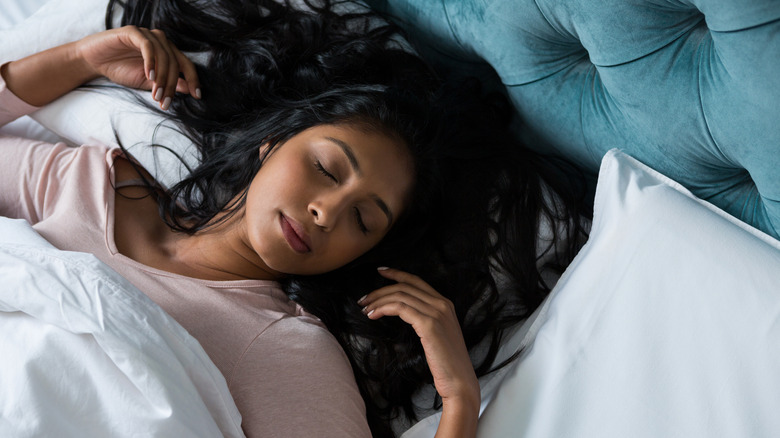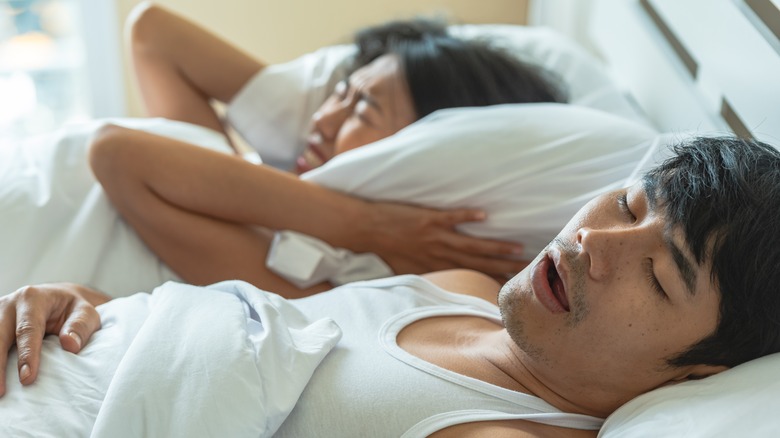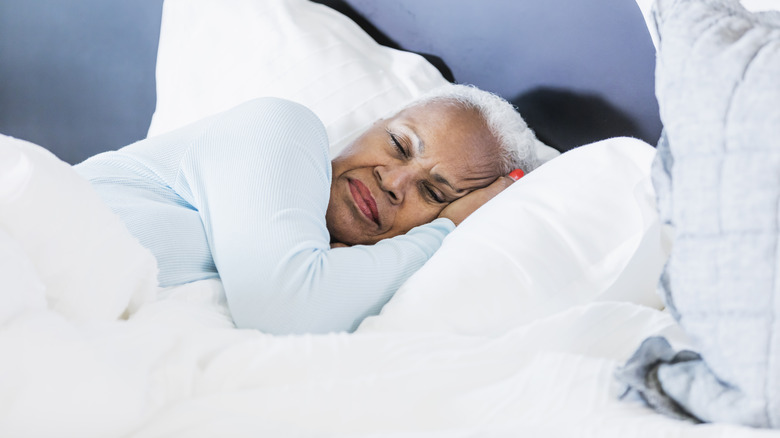Avoid Sleeping On Your Back If You Have This Medical Condition
When it comes to sleeping positions, our options go well beyond back sleeping or side sleeping. You have the fetal position, the starfish, the log, the soldier position, and many more, reports WebMD. Like most things, every sleeping position has its pros and cons. Sleeping on your stomach, for example, may be great for alleviating snoring but can be a nightmare in terms of spinal pain, according to News-Medical.net.
Generally speaking, sleeping on our backs isn't the best for our health to begin with. In fact, Mayo Clinic specialists deem it the worst of all sleeping positions, and yet it is preferred by approximately 38% of people, putting it in second place next to side sleeping. "I know many people find it to be comfortable, because they're not putting weight on their joints," sleep specialist Dr. Lois Krahn told the Mayo Clinic. However, for people diagnosed with sleep apnea, back sleeping is particularly advised against.
Back sleeping can worsen symptoms of sleep apnea
Obstructive sleep apnea syndrome (the most common type of sleep apnea) is a sleep-breathing disorder that results from a blockage in the upper respiratory airway, according to 2021 research published in the International Journal of Environmental Research and Public Health. This obstruction can interfere with one's ability to breathe while sleeping and prompt numerous wakeups throughout the night. Those who meet the diagnostic criteria for obstructive sleep apnea experience over five of these episodes hourly for a duration of 10 seconds or more. As a result, patients often feel sleepy throughout the day.
For those with sleep apnea, gravity works against them when sleeping on their back. When fully reclined, the jaw and tongue naturally slide backward towards the throat, hindering respiration (per Mayo Clinic). This becomes a recipe for snoring and fragmented sleep. You may also find yourself waking up to a thoroughly disgruntled sleeping partner. Instead, experts explain that people with sleep apnea are better off sleeping on their side.
Side sleeping prevents airway obstruction
Side sleeping prevents the tongue and jaw from falling backward towards our airway and minimizes the chances of snoring. "[A]ll in all, sleeping on the side — perhaps with their head slightly elevated as long as that's comfortable — is a good way to sleep," Dr. Krahn told the Mayo Clinic. However, side sleeping shouldn't be considered a treatment method for sleep apnea. The condition can increase one's risk for various health issues including heart attack, high blood pressure, and heart failure (via International Journal of Environmental Research and Public Health). Therefore, it is best to seek treatment for sleep apnea from a medical professional.
Continuous positive airway pressure (CPAP) machines continue to be the primary treatment method for obstructive sleep apnea syndrome. While effective, these devices can come with undesirable side effects. Since then, mandibular advancement devices (MAD) have come on the scene. Placed into the mouth overnight, the apparatus pulls the jaw forward in order to maintain unobstructed airflow. In addition to being less invasive than other forms of treatment, these devices also have the added perk of being more affordable than surgery or CPAP machines.



